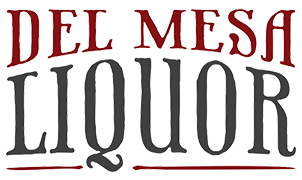Dry white wines are some of the most versatile and widely enjoyed wines. They can be enjoyed individually, with a meal, or as a pairing with various dishes.
Choosing the right dry white wine depends on several factors, including personal taste, the occasion, and the food served. Understanding these factors and taking the time to taste and experiment will help you find the perfect dry white wine from the liquor stores for any occasion.
Some popular dry white wine varieties include Chardonnay, Sauvignon Blanc, Pinot Grigio, and Riesling. Chardonnay is known for its rich buttery flavor, while Sauvignon Blanc is crisp and refreshing with herbal and citrus notes.
Pinot Grigio is light and bright with a subtle fruit flavor, and Riesling is known for its balance of sweetness and acidity. The origin of the wine, such as New World or Old World, can also impact its flavor profile.
Step-by-Step Guide to Choosing Dry White Wine
I. Understanding Wine Types
1. Varietals
Familiarize yourself with popular dry white wine varietals such as Chardonnay, Sauvignon Blanc, Pinot Grigio, and Riesling. Each has a unique flavor profile and can be paired with different types of food.
2. Origins
Wines can be classified based on their origin as New World or Old World. New World wines are typically fruitier, while Old World wines are more acidic and earthy.
II. Knowing Your Taste Preferences
1. Sweetness:
Determine if you prefer a dry wine with little to no sweetness or a glass of slightly sweet wine. Riesling, for example, can range from dry to sweet.
2. Body
Consider if you prefer a light, medium or full-bodied wine. Full-bodied wines from liquor stores have a rich and creamy texture, while light-bodied wines are crisp and refreshing.
3. Flavor Profile
Identify your preferred flavor notes, such as citrus, floral, herbal, or buttery.
III. Considering the Occasion
1. Formal vs. Casual
Consider the formality of the occasion. A more sophisticated wine may be appropriate for formal events, while a casual gathering may call for a more relaxed and approachable wine.
2. Food Pairing
If you are serving a meal, choose a wine that complements the flavors in the dish. For example, a crisp Sauvignon Blanc can pair well with seafood, while a rich Chardonnay can pair well with creamy sauces.
IV. Understanding Wine Labels
1. Alcohol Content:
Check the alcohol content on the label. Dry white wines typically have an alcohol content between 11-13%.
2. Vintage
The vintage refers to the year the grapes were harvested. The flavor of wine can vary significantly based on the growing conditions in a particular vintage year.
3. Winemaker or Estate
Look for the winemaker or estate on the label to get a sense of the winemaking style and reputation.
V. Tasting and Experimenting
1. Tasting Events
Attend local wine-tasting events to sample a variety of dry white wines and find new favorites.
2. Ask for Recommendations:
Seek advice from wine experts, such as sommeliers or wine store employees, to learn more about the different types of dry white wines.
3. Keep a Tasting Journal
Write your thoughts and impressions of each wine you try. This can help you track your preferences and make informed decisions in the future.

In conclusion, choosing the right dry white wine depends on personal preference and the occasion. By understanding wine types, knowing your taste preferences, considering the experience, reading wine labels, and tasting and experimenting, you can find the perfect dry white wine for any occasion.
Don'ts When Choosing Dry White Wine
When choosing a dry white wine, it is crucial to avoid inevitable mistakes and have a satisfying experience. Here are a few things to avoid while buying wines from liquor stores.
1. Relying Solely On Price
Do not assume that a high price means the wine is good quality. More expensive does not always equal better, so it is important to taste and compare wines within your budget.
2. Not Considering The Occasion
Choose a light wine for the event. For example, a light Pinot Grigio may be too insubstantial for a hearty meal, while a rich Chardonnay may be too heavy for a summer picnic.
3. Ignoring Food Pairing
Do not choose a wine that clashes with the food served. Pay attention to the flavors of the food and select a wine that complements those flavors.
4. Ignoring Vintage
Refrain from assuming that the latest vintage is the best choice. Some older vintages can be better due to aging, so it is essential to consider the vintage when choosing a wine from the liquor stores.
5. Not Trying Before Buying
Only purchase after first trying the wine. This is especially important when trying a new wine or a wine from an unfamiliar region.
By avoiding these mistakes, you can make a well-informed decision and enjoy your dry white wine to the fullest.
The Finest White Wines: Stun Your Taste Buds

Here are a few of the best dry white wines, along with reasons why they are highly regarded:
- Chardonnay: This wine is known for its rich buttery flavor, making it a popular choice for those who enjoy a full-bodied wine. Chardonnays from top wine regions, such as Burgundy, France, and Napa Valley, California, have been highly sought after.
- Sauvignon Blanc: This crisp and refreshing wine has herbal and citrus notes, making it an excellent choice for warm weather or seafood dishes. Sauvignon Blancs from New Zealand are particularly well-regarded, with their bright and zesty flavors.
- Riesling: This wine is known for its balance of sweetness and acidity, making it a versatile choice for sweet and savory dishes. Rieslings from Germany are renowned for their delicate floral aromas and crisp finish.
- Pinot Grigio: This light and bright wine has a subtle fruit flavor, making it an excellent choice for sipping on its own or with light dishes. Pinot Grigios from Italy are especially popular, with their crisp and refreshing characteristics.
These dry white wines are famous for their quality and versatility and are sure to satisfy a wide range of palates. Whether you prefer a full-bodied wine or a light and refreshing wine from the liquor stores, there is a dry white wine to suit your taste.
 Log in
Log in
 My Wishlist
My Wishlist Reward Program
Reward Program Corporate Gifts
Corporate Gifts Customer Help
Customer Help


